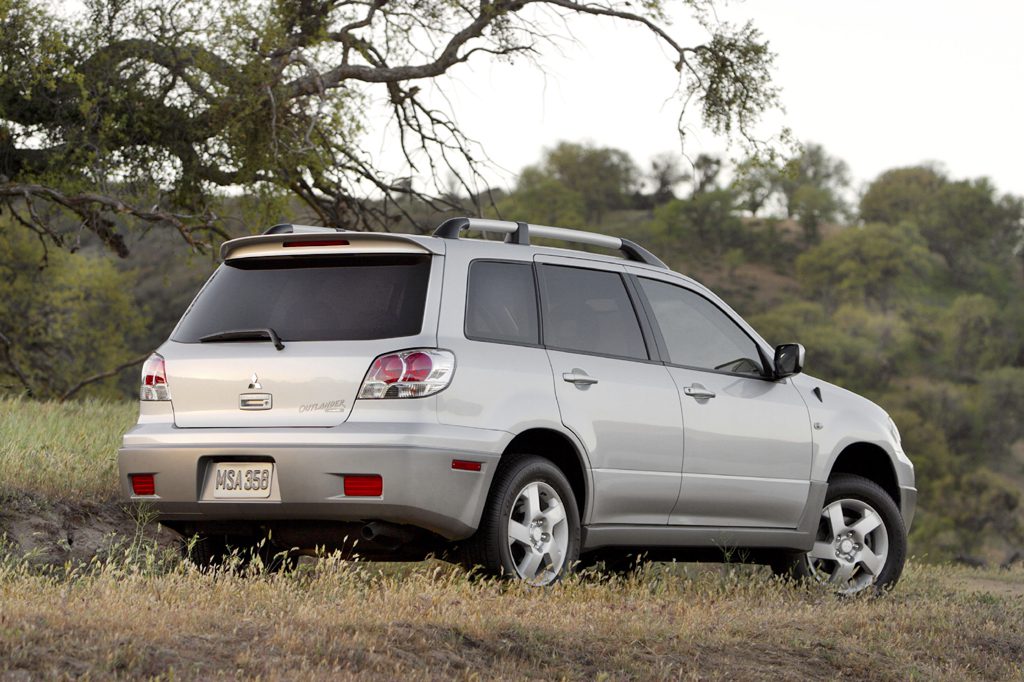| Compact SUV; Built in Japan |
|
|
| Good condition price range: $3,600 – $10,200* |

2003 Mitsubishi Outlander

2004 Mitsubishi Outlander

2005 Mitsubishi Outlander

Mitsubishi Outlander interior
| Pros: |
|
| Cons: |
|
Outlander is one of the more pleasantly carlike compact SUVs, but is unexceptional otherwise. Its engine feels coarse and is underpowered in anything but routine driving. Mitsubishi’s reputation for workmanship and resale value has trailed that of most import brands. That could mean moderate secondhand prices, but uncertain reliability.
Overview
Mitsubishi entered the compact sport-utility vehicle arena for 2003 with a new crossover wagon, based on its Lancer subcompact sedan. The Outlander represented the “tall-wagon” school of small SUVs, typified by the Subaru Forester, versus the more trucklike profile of a Ford Escape or Honda CR-V.
Slightly longer overall than most SUVs in the compact class, the Outlander was no taller or wider. Outlanders seated five and used a 140-horsepower four-cylinder engine and four-speed automatic transmission, with a separate gate for manual shifting.
Front- and all-wheel drive versions were offered, in base LS and uplevel XLS trim levels. The AWD system lacked low-range gearing, and Outlanders were not intended for serious off-road use. Front side airbags and antilock braking were optional–exclusive to the XLS.
All Outlanders had 16-inch wheels, 60/40 split folding rear seatbacks, air conditioning, CD audio, cruise control, and power windows, locks, and mirrors. The XLS added alloy wheels, a roof rack, rear spoiler, fog lamps, and clear taillamp lenses. Inside, the XLS was distinguished by white-faced instrumentation, see-through headrests, and a leather-wrapped steering wheel and shift knob.
Other XLS-only options included a sunroof and leather upholstery. Compact-SUV rivals included the Ford Escape, Honda CR-V, and Subaru Forester.
Yearly Updates
| 2004 Outlander Additional power led the 2004 revisions to Mitsubishi’s compact SUV. Specifically, the four-cylinder engine gained 20 horsepower. Mitsubishi claimed quieter running via a revised exhaust system and various noise-deadening measures. |
| 2005 Outlander Four-wheel disc brakes became standard this year, and a manual transmission became available. Rear-end styling was revised slightly, and a top-of-the-line Limited series joined the LS and XLS. Alloy wheels held 17-inch tires on the XLS and Limited. |
| 2006 Outlander There were no changes of significance for the 2006 Outlander. |
